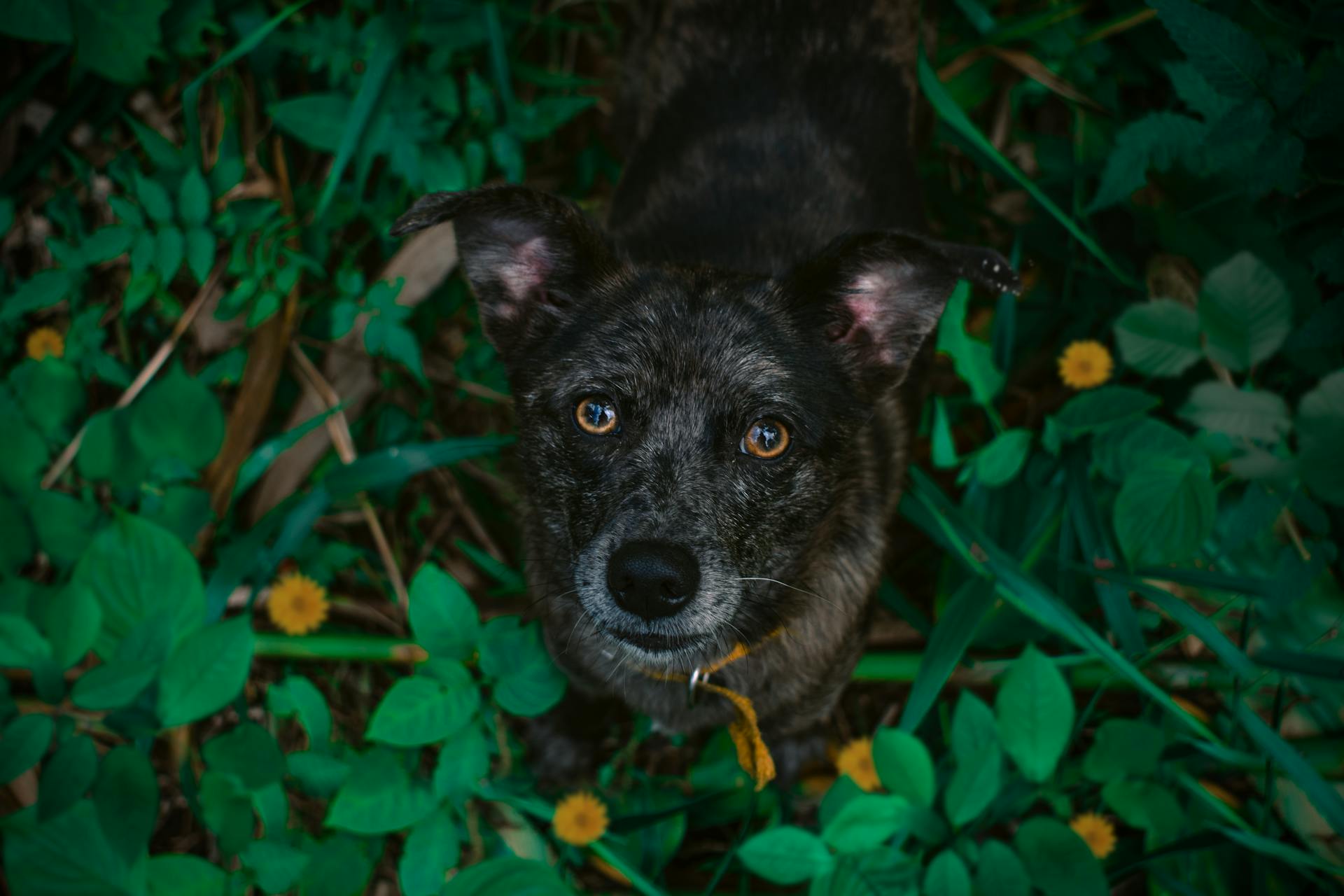
The Boerboel is a majestic breed with a rich history that spans centuries. Developed in South Africa in the 17th century, the Boerboel was bred as a working dog to protect farms and families.
Originally, the Boerboel was a cross between a local dog and a European mastiff, resulting in a robust and powerful breed. They were highly valued for their loyalty and protective instincts.
In the 19th century, the Boerboel became a favorite among the Boer farmers, who relied on them to guard their livestock and property. This marked the beginning of the breed's popularity as a farm dog.
The Boerboel's versatility and strength made them an ideal breed for a variety of tasks, from guarding to hunting.
Take a look at this: Pomeranian Dog Origin
Origins and History
The Boerboel is South Africa's answer to the Mastiff, with its origins dating back to the late 1600s when Dutch colonists, known as the Boers, settled in southern Africa. The breed's name, Boerboel, translates to "farmer's dog" in Afrikaans/Dutch, reflecting its original purpose as a working dog.
The Boerboel's ancestors include the Bullenbeisser, a now-extinct breed that was involved in the development of the Boxer, and the Bullmastiff, which was imported to South Africa in the 1920s to guard diamond mines.
These early imports, along with longer-legged Bulldogs brought by the British, helped shape the Boerboel's appearance, which is characterized by its blocky head and tremendous bone structure. The breed's "bulldogginess" is more pronounced than that of the Bullmastiff but less so than the Dogue de Bordeaux.
The Boerboel's ancestors were bred with indigenous domestic dogs and other breeds over several centuries, resulting in a robust and tenacious breed that could withstand the hot weather and encounters with wildlife. Only the strongest dogs were able to survive, contributing to the Boerboel's exceptional strength and tenacity.
The Boerboel was bred to defend the homestead and hunt dangerous wildlife, such as hyenas, baboons, leopards, and other big cats. Its instincts as a guardian and hunter remain strong, making it an excellent watchdog and protector of its family.
The Boerboel's exact ancestry is uncertain, but it is believed to have originated from native African canine species, as well as breeds brought by Dutch, French, and English settlers, including the Bullenbijter and Bullmastiffs.
Expand your knowledge: Boerboel Bullmastiff
Physical Characteristics
The Boerboel is a big dog with a distinctive physical presence. Their wide, block-like head is one of their most recognizable features.
Boerboels have strong jaws and broad chests, which give them a sturdy appearance. Their thick, arched necks are well-suited for supporting their substantial muscles.
Their sloping shoulders complement their broad chests, creating a well-balanced physique. Boerboels are big dogs, but their muscles are evenly distributed, giving them a powerful yet elegant appearance.
Breed Development
The Boerboel was originally bred to be an incredibly athletic animal, capable of handling the physically demanding and sometimes treacherous life in South Africa.
In the early 1980s, a movement was undertaken in South Africa to organize the Boerboel as a bona-fide breed, as it had been a reflexive part of Boer farm life for centuries.
The breed's popularity in the United States led to its addition to the AKC's Foundation Stock Service in 2006, followed by its inclusion in the Miscellaneous Group in 2010 and full AKC recognition in 2015.
As a result of its growing popularity, some unscrupulous breeders began producing Boerboels in historically incorrect colors, such as black, through crosses with other breeds.
Related reading: Boerboel Akc
All-Purpose Protection Dog

In South Africa, the Boerboel was bred to be an incredibly athletic animal. Life was physically taxing and frequently dangerous for humans and dogs alike.
The Boerboel was more a protection dog that could be called on to hunt, whereas its cousin the Rhodesian Ridgeback was just the reverse.
Boer farmers in South Africa were more focused on using the Boerboel to guard their farms and families. They didn't prioritize standardizing the breed like the British did with the Ridgeback.
The Boerboel can be intolerant of strangers, making it crucial for owners to extensively socialize them. This is especially important given the breed's size and power.
Traditionally, the Boerboel is also not wild about canines of the same sex. This is a characteristic that owners should be aware of when introducing other dogs to the Boerboel.
Readers also liked: Rhodesian Ridgeback X Boerboel
Standardizing and Recognizing
The Boerboel breed was once so well-suited to its environment that standardization was almost unnecessary, with only the strongest and most capable dogs surviving and reproducing.
In the early 1980s, a movement to organize the Boerboel as a recognized breed began in South Africa, driven by the need for a standardized breed standard.
The breed's popularity in the United States was swift, with the Boerboel being added to the American Kennel Club's (AKC) Foundation Stock Service in 2006.
The Boerboel joined the AKC's Miscellaneous Group in 2010 and achieved full recognition in 2015, a testament to the breed's growing popularity and acceptance.
However, this increased popularity also led to the introduction of historically incorrect colors, such as black, which caused chaos in the breed and led to disagreements among breeders and clubs.
The introduction of these non-traditional colors was largely driven by the desire for a premium price, often resulting from crosses with black Labs or Neapolitan Mastiffs.
The Kennel Union of South Africa vigorously opposed the introduction of these colors, but ultimately lost control of the breed to the proponents of black Boerboels.
This impasse has led to the Boerboel's likely permanent exclusion from recognition by the Fédération Cynologique Internationale, which governs dog shows in many non-English-speaking countries.
Here's an interesting read: Full Grown Black Boerboel
Featured Images: pexels.com


